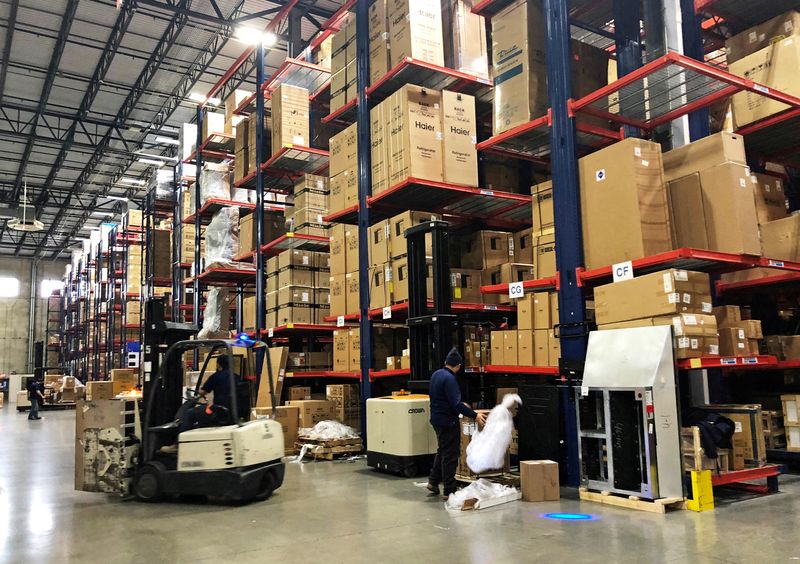WASHINGTON (Reuters) - Production at U.S. factories unexpectedly fell in December, pulled down by a decline in output at motor vehicle plants amid an ongoing global semiconductor shortage.
Manufacturing output dropped 0.3% last month after increasing 0.6% in November, the Federal Reserve said on Friday. Economists polled by Reuters had forecast factory production rising 0.5%. Output increased 3.5% compared to December 2020.
Manufacturing, which accounts for 11.9% of the U.S. economy, remains supported by lean inventories at businesses as demand for goods remains strong. But COVID-19 and the recovery from the pandemic have overstretched supply chains, igniting inflation.
Manufacturing production increased at a 4.9% annualized rate in the fourth quarter after rising at a 4.0% rate in the July-September quarter.
Production at auto plants dropped 1.3% last month after rising 1.7% in November. Motor vehicle output is about 6% below its year-earlier level.
Last month's decline in manufacturing output combined with a 1.5% decline in utilities to push industrial production down 0.1%. That followed a 0.7% gain in November. Utilities were undercut by unseasonably warm weather in December, which lessened demand for heating.
Mining production rose 2.0%. Industrial production grew at a 4.0% rate in the fourth quarter. That followed a 3.5% pace of increase in the third quarter.

Capacity utilization for the manufacturing sector, a measure of how fully firms are using their resources, decreased 0.2 percentage point to 77.0% in December. Overall capacity use for the industrial sector slipped 0.1 percentage point to 76.5% last month. It is 3.1 percentage points below its 1972-2020 average.
Officials at the Fed tend to look at capacity use measures for signals of how much "slack" remains in the economy — how far growth has room to run before it becomes inflationary.